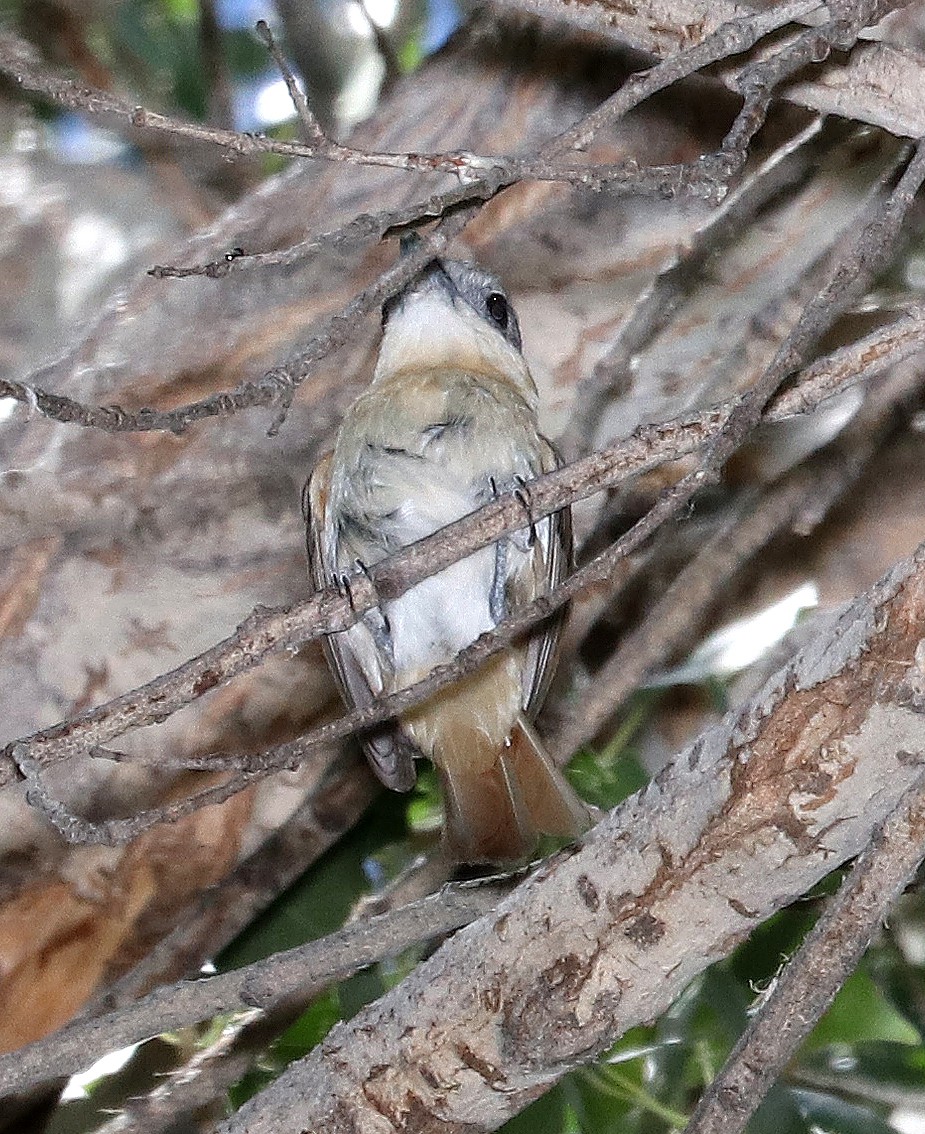Rose-throated Becard
A species of Becards Scientific name : Pachyramphus aglaiae Genus : Becards
Rose-throated Becard, A species of Becards
Botanical name: Pachyramphus aglaiae
Genus: Becards
Content
Description General Info
Description
The most distinguishing characteristics of this bird is the rose-colored neck bib found in adult males. Males are mostly gray in color, with a contrasting darker upperside and a pale gray underside. Males also show a black crown. Females are mostly brown in color, with a rusty brown upperside, and a pale buffy underside. The crown is a dark gray, not nearly as stunning as the males. Its usual call is a mournful "seeeeuuuwww". 
Size
17-18 cm (6.5-7.25 in)
Nest Placement
Tree
Feeding Habits
Rose-throated Becard primarily consumes animal matter such as caterpillars, beetles, grasshoppers, spiders, and nematodes, complemented by fruits and arillate seeds. Its feeding behaviors include foraging and hunting, with unique adaptations for a varied diet.
Habitat
Mainly mesic and arid woodlands, forest edges, arid temperate regions in the northern sections of its range, in the north, only riparian situations, while farther south, a range variety of woodland and forest types, tropical deciduous, tropical evergreen woodlands, riverine gallery forests, riparian woodland in arid regions, secondary woodland, lower sections of cloud forest, some partially settled areas, locally into pine-oak woodland, sometimes spots typified by a habitat mosaic of semi-wooded pasture, riparian woodland, dry, thorny scrubland
Nest Behavior
Rose-throated Becard pairs build nests mostly by the female's effort, occasionally with male help. Nesting includes continuous material addition, even during incubation.
Nest Characteristics
Rose-throated Becard nests are large globular masses of vegetation often suspended at the end of branches 50' high. They comprise bark, grass, vines, and spiderwebs, with a side entrance.
Dite type
Insectivorous
General Info
Feeding Habits
Bird food type
Sounds
Call
Recording location: Costa Rica
Call
Recording location: Mexico
Distribution Area
Rose-throated becards usually occur in riparian areas of pine-oak woodlands and evergreen forest. They breed from south-easternmost Arizona and extreme southern Texas of the United States to western Panama. Breeding is local and sporadic in the US, and becomes more regular in Mexico. Birds are normally permanent residents, but birds found in the United States generally migrate for the winter. 
Species Status
Not globally threatened.
Scientific Classification
Phylum
Chordates Class
Birds Order
Perching birds Family
Cotingas Genus
Becards Species
Rose-throated Becard 